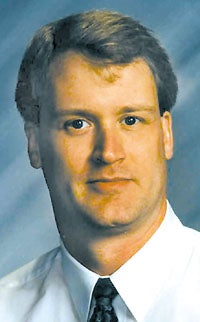Realignment decision won’t be just a quick fix
Published 8:58 am Monday, October 18, 2010
Bill Leland, Guest Column
In January of this year, the Albert Lea school board adopted a new set of expectations called board aims.
1. Safe, healthy, welcoming schools.
2. Increase opportunity and achievement.
3. Effective and efficient operations.
Through these board aims, the school board is communicating the expectation that this district operates with the understanding that an average outcome is not good enough. These board aims apply to school board members, staff, students, parents, guardians and residents of District 241. These aims sound simple and unobtrusive; however, when we all acknowledge and accept the premise that average outcomes are unacceptable, the weight of these aims become an effective tool in moving this school district forward.
The realignment discussion currently taking place is a perfect example of how the application of the board’s aims is applied. Therefore, as the current realignment opportunity presented itself the district’s common charge was and is to evaluate the subject using these expectations.
The discussion regarding the potential need to realign the district drew from years of research, professional expertise and debate by Independent School District 241 staff. Re-alignment in this district is not a new phenomenon. This district, like all of its neighbors, has evolved from class sizes twice that of today’s, but countered with the emergence of mainstreaming, evolving technology needs, accountability programs, enrollment trends, building closures and mandated programming. In other words, realignment has been the norm, not the exception, in this district.
Framing of the discussion is what is different this time around. The need is real, action is required, and a decision based on the adopted board aims will be made. That is why we asked the administrative staff of the district to explore what the school board considered the best options available for addressing the current opportunity.
Discussion during the public meetings centered on these three options. As stated earlier, these three options are the product of significant staff and board time analyzing the short-term and long-term effects of items, such as: enrollment trends, building configurations, student achievement, delivery systems, external factors such as No Child Left Behind Act and legislative mandates and financial projections.
Our objective with the public discussion is to further the research this opportunity is presenting as well as to inform and elicit feedback. We seek this public discussion not only because it is appropriate, but because this district has always been fortunate in that the quality and experience of the staff has been augmented by the excellent support and interaction the residents of the district has provided in decisions such as this one.
The next step is to discuss what we have learned at our next board meeting on Oct. 18. From there, it is possible that the board will request staff to conduct site visits at districts currently using the three options or close variations. As for a decision regarding what direction the board will take, I expect that will be done at our Nov. 15, board meeting.
Let me assure you, the decision will not be based on what the best fix is but on how we are going to increase opportunity and achievement for all of our students in the most effective and efficient manner possible in a safe, healthy and welcoming environment.
Albert Lea resident Bill Leland is the chairman of the school board for Albert Lea Area Schools.


